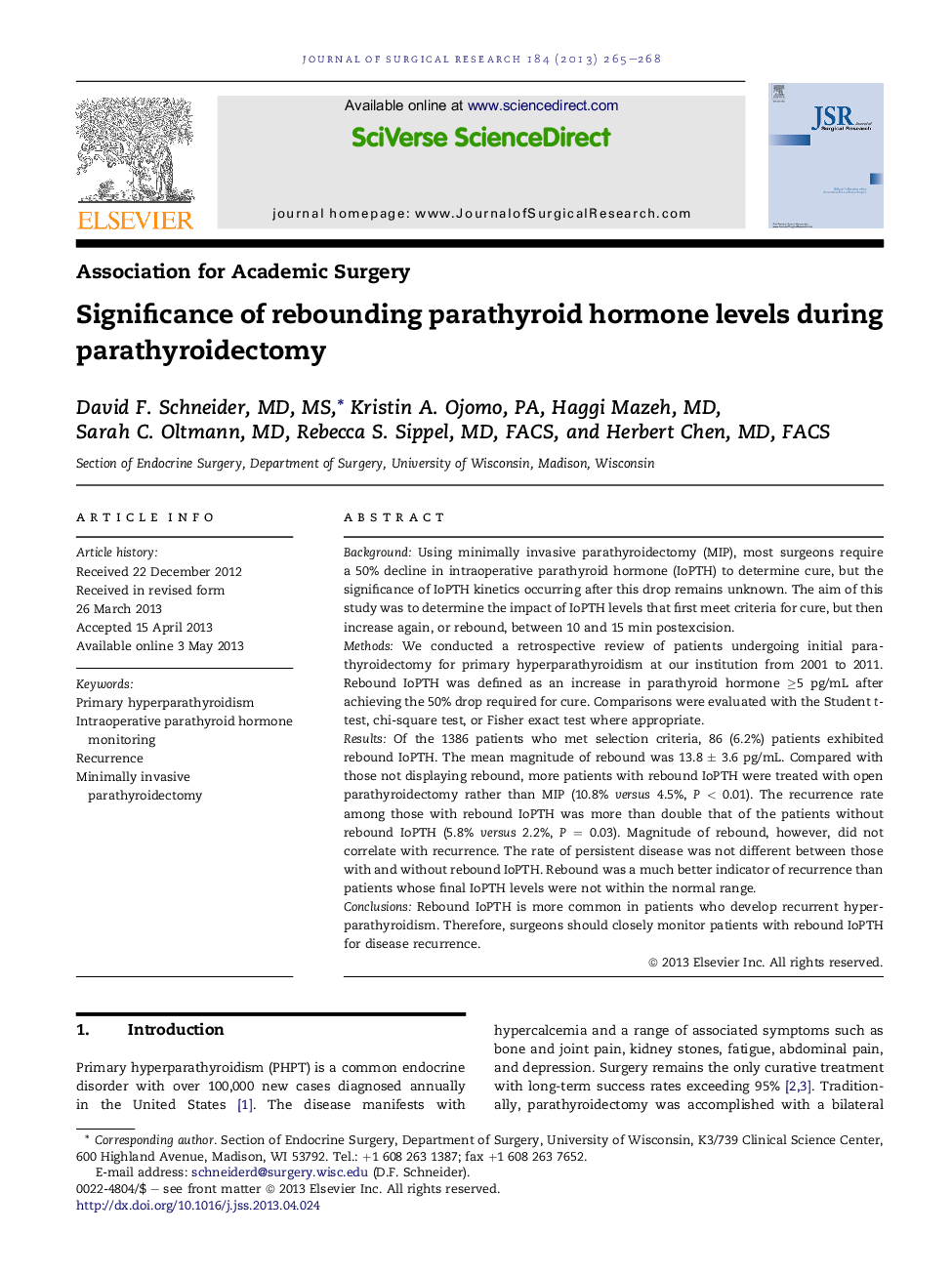| Article ID | Journal | Published Year | Pages | File Type |
|---|---|---|---|---|
| 4300603 | Journal of Surgical Research | 2013 | 4 Pages |
BackgroundUsing minimally invasive parathyroidectomy (MIP), most surgeons require a 50% decline in intraoperative parathyroid hormone (IoPTH) to determine cure, but the significance of IoPTH kinetics occurring after this drop remains unknown. The aim of this study was to determine the impact of IoPTH levels that first meet criteria for cure, but then increase again, or rebound, between 10 and 15 min postexcision.MethodsWe conducted a retrospective review of patients undergoing initial parathyroidectomy for primary hyperparathyroidism at our institution from 2001 to 2011. Rebound IoPTH was defined as an increase in parathyroid hormone ≥5 pg/mL after achieving the 50% drop required for cure. Comparisons were evaluated with the Student t-test, chi-square test, or Fisher exact test where appropriate.ResultsOf the 1386 patients who met selection criteria, 86 (6.2%) patients exhibited rebound IoPTH. The mean magnitude of rebound was 13.8 ± 3.6 pg/mL. Compared with those not displaying rebound, more patients with rebound IoPTH were treated with open parathyroidectomy rather than MIP (10.8% versus 4.5%, P < 0.01). The recurrence rate among those with rebound IoPTH was more than double that of the patients without rebound IoPTH (5.8% versus 2.2%, P = 0.03). Magnitude of rebound, however, did not correlate with recurrence. The rate of persistent disease was not different between those with and without rebound IoPTH. Rebound was a much better indicator of recurrence than patients whose final IoPTH levels were not within the normal range.ConclusionsRebound IoPTH is more common in patients who develop recurrent hyperparathyroidism. Therefore, surgeons should closely monitor patients with rebound IoPTH for disease recurrence.
